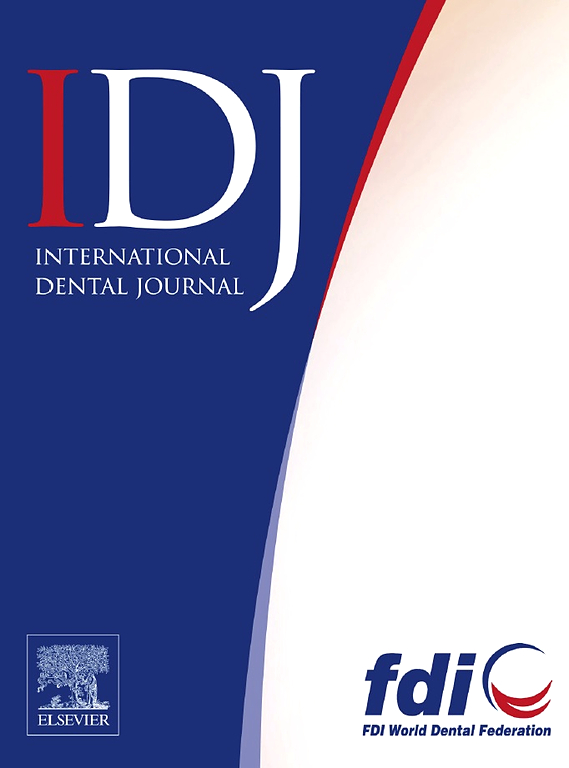A Prediction Model for External Root Resorption of the Second Molars Associated With Third Molars
IF 3.2
3区 医学
Q1 DENTISTRY, ORAL SURGERY & MEDICINE
引用次数: 0
Abstract
Objectives
The aim of this study is to investigate risk factors for external root resorption (ERR) of second molars (M2) associated with impacted third molars (M3), and to develop a prediction model that can offer dentists a reliable and efficient tool for predicting the likelihood of ERR.
Methods
A total of 798 patients with 2156 impacted third molars were collected from three centres between 1 December 2018 and 15 December 2018. ERR was identified by cone beam computed tomography examinations. The effects of different risk factors on the presence/absence of ERR and its severity were analysed using Chi-square or Fisher test. Multivariate logistic regressive analysis with stepwise variable selection methods was performed to identify factors which were significant predictors for ERR and its severity. Subsequently, a prediction model was developed, and the model performance was validated internally and externally.
Results
The overall incidence of ERR of second molars was 16.05%. The prediction model was established using six factors including position (upper/lower jaw), impact type, impact depth (PG: A-B-C), contact position, root number of M3, and age. In terms of internal validation, the prediction model demonstrated satisfactory performance, achieving an area under curve of 0.961 and a prediction accuracy of 0.907. As for external validation, the area under curve remained high at 0.953, with a prediction accuracy of 0.892.
Conclusion
A risk prediction model for ERR was established in the present study. Position (upper or lower jaw), impact type, impact depth (PG: A-B-C), contact position, root number of M3, and age were identified as influencing variables which were significant predictors in the development of this predictive model. The prediction model showed great discrimination and calibration.
Clinical relevance
This prediction model has the potential to aid dentists and patients in making clinical decisions regarding the necessity of M3 extraction.
与第三磨牙相关的第二磨牙外根吸收预测模型。
研究目的本研究旨在调查与撞击性第三磨牙(M3)相关的第二磨牙(M2)外根吸收(ERR)的风险因素,并开发一个预测模型,为牙医提供一个可靠、高效的工具,用于预测ERR发生的可能性:2018年12月1日至2018年12月15日期间,从三个中心共收集了798名患者的2156颗撞击性第三磨牙。通过锥形束计算机断层扫描检查确定ERR。采用Chi-square或Fisher检验分析不同风险因素对ERR存在/不存在及其严重程度的影响。采用逐步变量选择法进行多变量逻辑回归分析,以确定对ERR及其严重程度有显著预测作用的因素。随后,建立了一个预测模型,并对模型的性能进行了内部和外部验证:结果:第二磨牙ERR的总发生率为16.05%。预测模型是通过六个因素建立的,包括位置(上颌/下颌)、撞击类型、撞击深度(PG:A-B-C)、接触位置、M3的根数和年龄。在内部验证方面,预测模型表现令人满意,曲线下面积达到 0.961,预测准确率为 0.907。外部验证方面,曲线下面积仍高达 0.953,预测准确率为 0.892:本研究建立了ERR风险预测模型。位置(上颌或下颌)、撞击类型、撞击深度(PG:A-B-C)、接触位置、M3根数和年龄被确定为影响变量,这些变量在该预测模型的建立过程中起着重要的预测作用。该预测模型具有很高的辨别度和校准性:该预测模型有望帮助牙医和患者就是否有必要拔除 M3 作出临床决策。
本文章由计算机程序翻译,如有差异,请以英文原文为准。
求助全文
约1分钟内获得全文
求助全文
来源期刊

International dental journal
医学-牙科与口腔外科
CiteScore
4.80
自引率
6.10%
发文量
159
审稿时长
63 days
期刊介绍:
The International Dental Journal features peer-reviewed, scientific articles relevant to international oral health issues, as well as practical, informative articles aimed at clinicians.
 求助内容:
求助内容: 应助结果提醒方式:
应助结果提醒方式:


